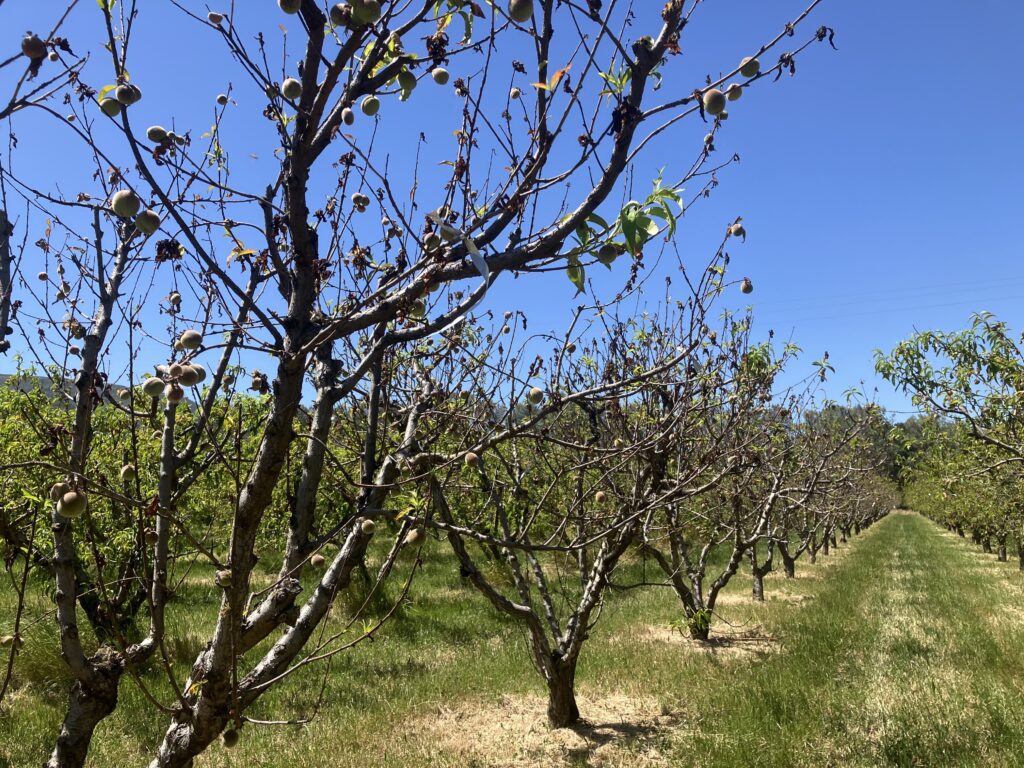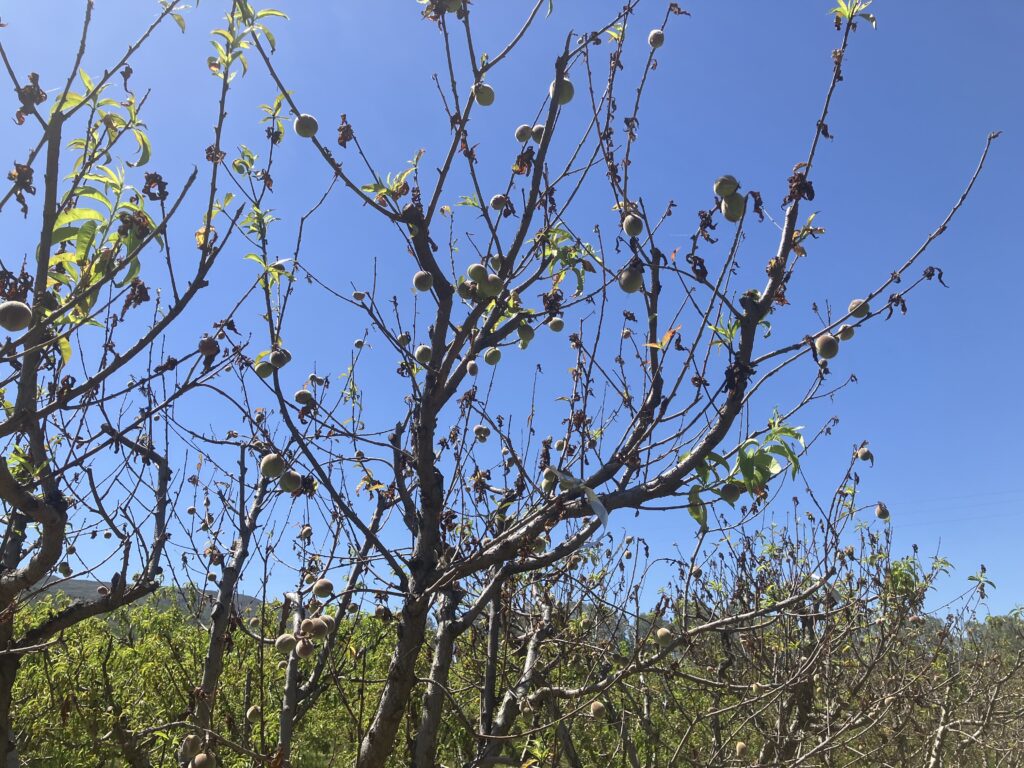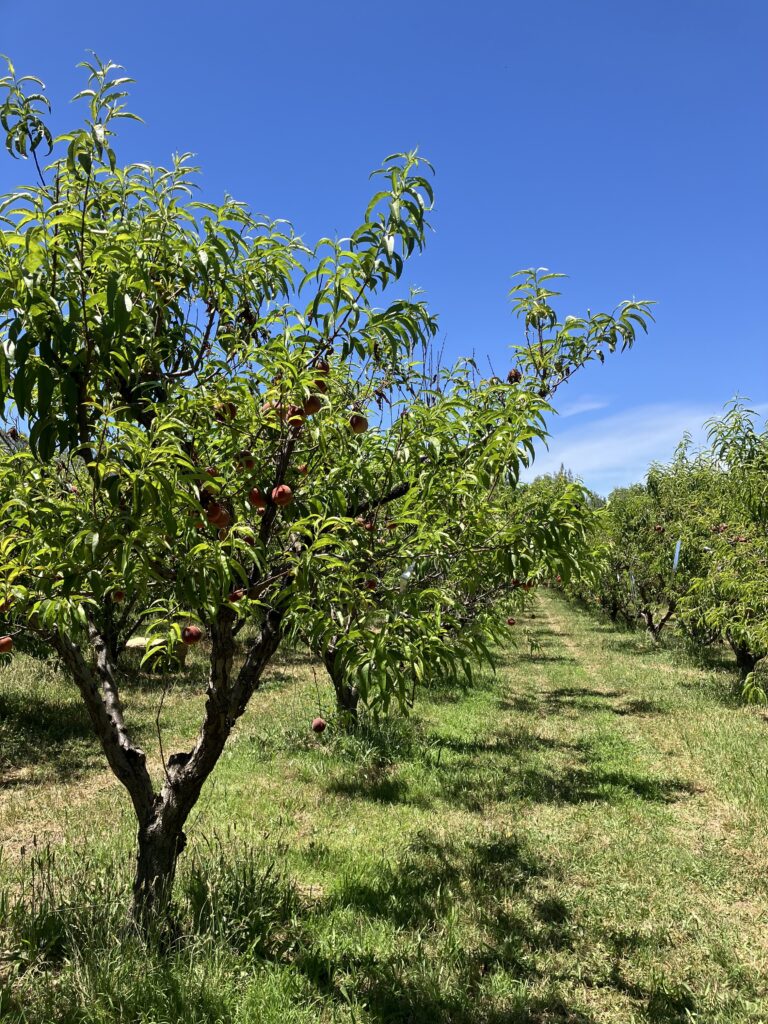We’re just at the start of the peach season, and while every variety is a little different, it’s fairly safe to say that we’ve got a small crop of peaches. In this case, small refers to the size of the fruit, not the total amount of fruit.
Why? I checked in with Andrew to get the scoop, plus some farm history and insight into farm decision-making.
The culprit is peach leaf curl, a fungal disease that affects leaves and shoots of peach and nectarine trees. Many people with these trees in their backyards probably have seen it at some point – the Taphrina deformans fungus causes the leaves to turn red, curled, and puckered with symptoms occurring about two weeks after the leaves emerge. Later, the leaves turn yellow and fall off. Peach leaf curl isn’t fatal; it doesn’t kill the trees and they put out a second set of leaves which rarely get infected. See the set of photos below; the top set are from May 10 and the bottom are from June 16. While the trees now are looking much better, all the energy that the trees spent to regrow their leaves is energy that they couldn’t put into growing fruit. Thus small peaches.




The Taphrina deformans fungal spores infect leaves and shoots when leaves are still in bud stage and while just emerging. The fungus thrives in mild, wet weather, and rain helps spreads the fungus. So you can see why most of our springs, especially this year, are perfect conditions for peach leaf curl.
Once you see symptoms of peach leaf curl, there isn’t much you can do. Instead, it’s all about prevention. There are some tree varieties that are resistant to peach leaf curl, but for all the others, the standard recommendation is to spray a fungicide in fall after the leaves have fallen but before they go into dormancy, for us usually in early December. Doing a second spray in late dormancy, early February, is an option but we’ve rarely done that.

Until recently, we used the standard recommended organic fungicides (copper or lime sulfur), and they worked well, though not without downsides. Lime sulfur is caustic to human skin and machinery. Copper can build up in the soil over time, eventually causing copper toxicity issues for crops planted in those fields, especially whatever crops follow that orchard. Short term, we were worried about the sheep or chickens that might graze in those orchards. Big picture, fungicides are a reactive measure. When creating an organic system, our long-term goal is to develop healthy biological systems, above and below ground, to help us grow healthy crops. So we started looking into alternatives to fungicides and landed on a microbial inoculant product. It’s a mix of various microbes, each selected to perform a specific function and to outcompete the undesired microbes to support healthy, resilient plants and healthy soil. It’s another form of biocontrol, similar to how we release certain insects to help us control others, and plant hedgerows to support native predator species. These products can be described as using competitive biology or directed biology.
The competitive biology method worked great during a trial year in the winter of 2021/2022, so we stopped using fungicides for the past two winters, with good results in 2022/2023. But clearly there were not good results this year.
We’re not giving up on competitive biology. We may need to combine it with the traditional fungicides until we better understand how it works with our systems. There’s a lot to figure out and only one chance to experiment each year. We seem to lose a peach crop to frost about one out of every five years. So while small, we appreciate the peaches we do have.
Elaine Swiedler and Andrew Brait
